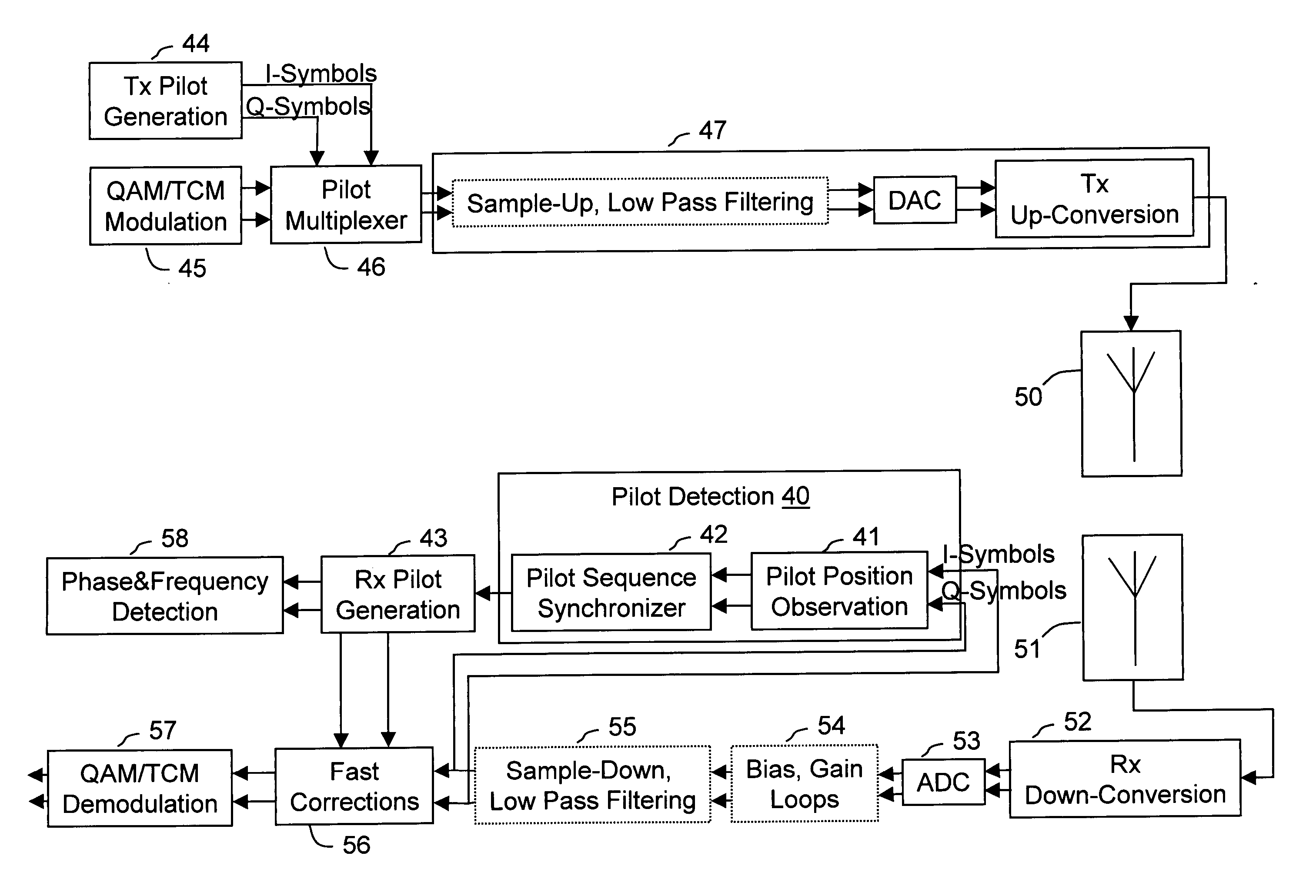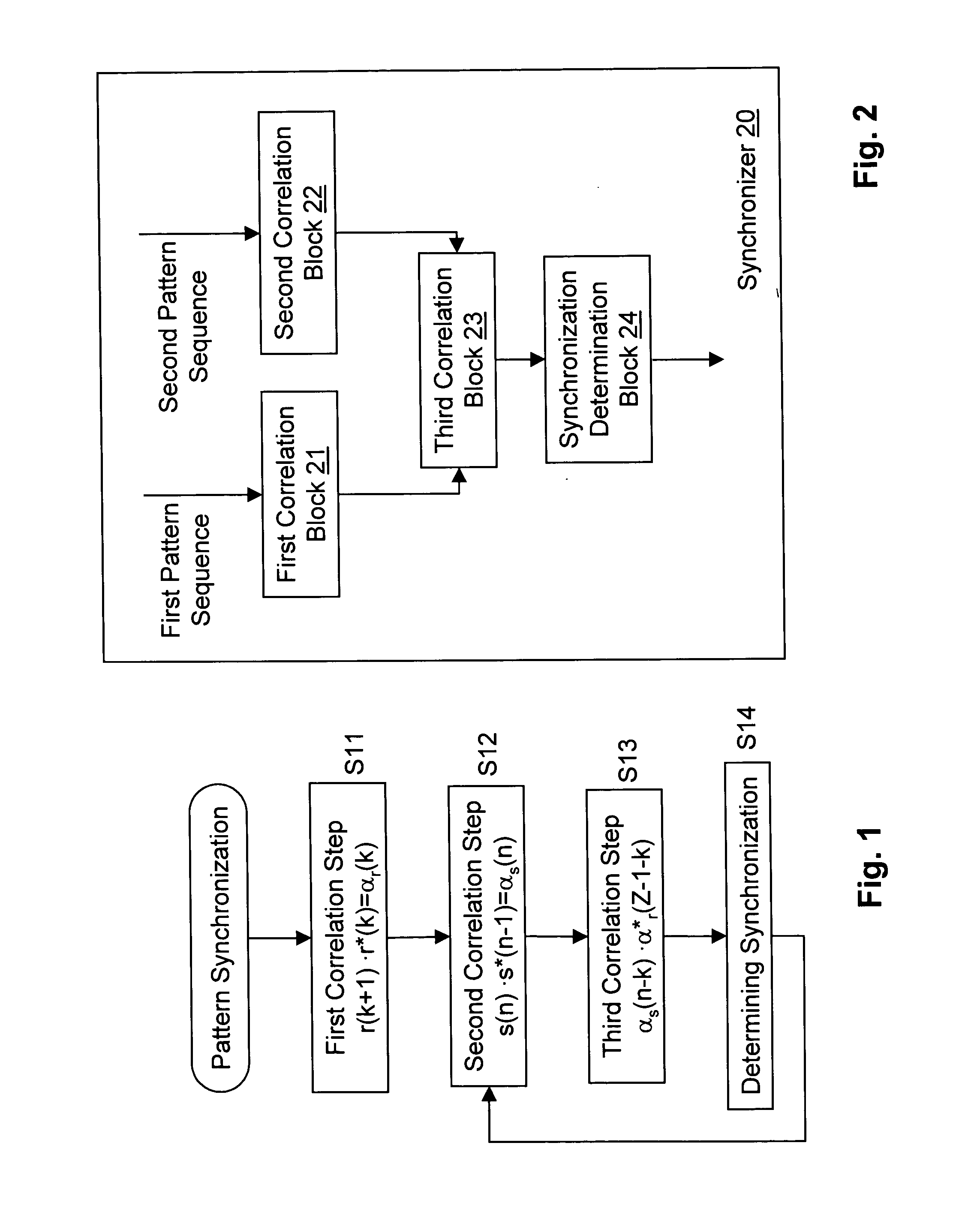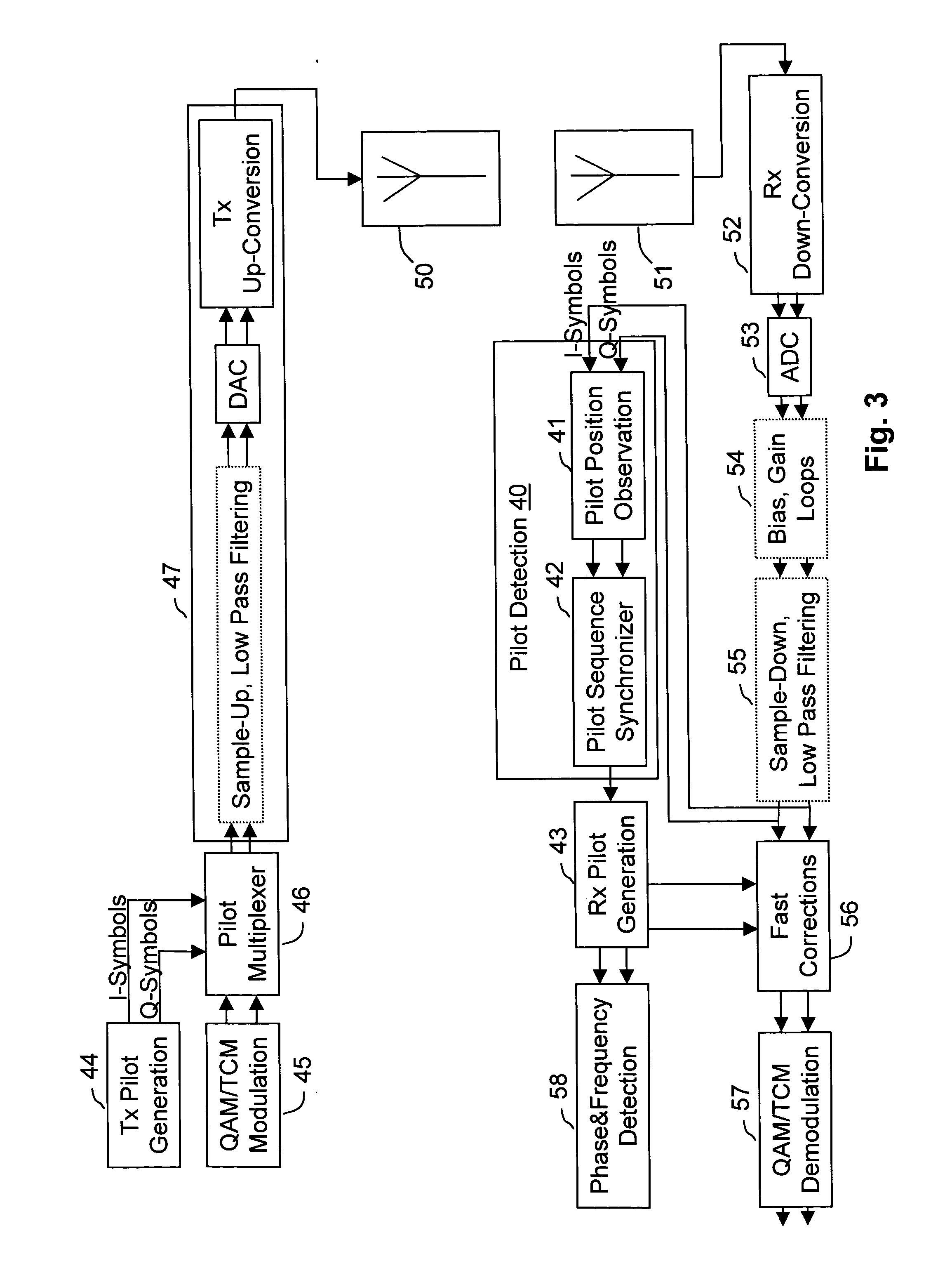Pattern sequence synchronization
a pattern sequence and sequence synchronization technology, applied in the direction of synchronisation signal speed/phase control, multi-frequency code system, amplitude demodulation, etc., can solve the problem of analog stages of the transceiver system, carrier-frequency mismatch of the transmitter/receiver, and the usual expectation of extended mismatch, so as to increase the tolerable range of carrier-frequency mismatch
- Summary
- Abstract
- Description
- Claims
- Application Information
AI Technical Summary
Benefits of technology
Problems solved by technology
Method used
Image
Examples
Embodiment Construction
FIG. 1 shows a flow diagram illustrating a representative method of synchronizing a first pattern sequence and a second pattern sequence according to certain embodiments of the present invention. In step S11, symbols r(k)=r1(k)+jrQ(k) of a first pattern sequence are correlated, which first correlation step yields a first differential phase information sequence αr(k). In step S21, symbols s(n)=s1(n)+jsQ(n) of a second pattern sequence are correlated, which second correlation step yields a second differential phase information sequence αs(n). In step S13, the first and second differential phase information sequences are correlated, which third correlation step yields a correlation result corrDPV(n). Then, in step S14, a synchronization between the first and second pattern sequences is determined, usually on the basis of the obtained correlation result.
FIG. 2 shows a block diagram illustrating a commonly used synchronizer 20, commonly for synchronizing two pattern sequences according t...
PUM
 Login to View More
Login to View More Abstract
Description
Claims
Application Information
 Login to View More
Login to View More - R&D
- Intellectual Property
- Life Sciences
- Materials
- Tech Scout
- Unparalleled Data Quality
- Higher Quality Content
- 60% Fewer Hallucinations
Browse by: Latest US Patents, China's latest patents, Technical Efficacy Thesaurus, Application Domain, Technology Topic, Popular Technical Reports.
© 2025 PatSnap. All rights reserved.Legal|Privacy policy|Modern Slavery Act Transparency Statement|Sitemap|About US| Contact US: help@patsnap.com



